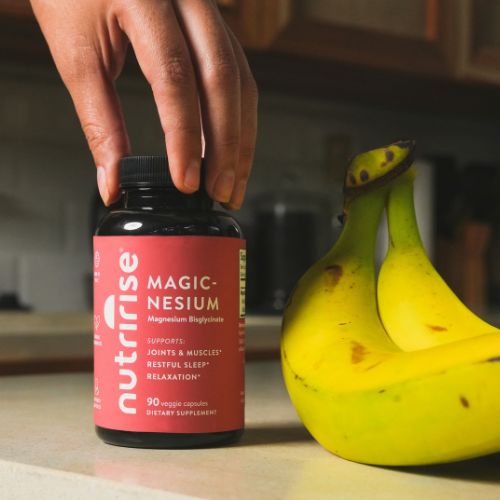• Understanding Detox Diets: Separating Fact from Fiction
Your body already has a sophisticated detoxification system working around the clock. Your liver, kidneys, lungs, and skin constantly filter and eliminate toxins without requiring special juice cleanses or restrictive eating plans. However, this doesn't mean all detox approaches are without merit.
Research published in the Journal of Human Nutrition and Dietetics found that while commercial detox diets lack scientific evidence for toxin removal, they may provide short-term benefits through calorie restriction and increased vegetable intake. The key lies in understanding what these diets actually accomplish versus what they claim to do.
Many people report feeling more energetic and experiencing clearer skin during detox periods. These improvements likely stem from eliminating processed foods, reducing sugar intake, and increasing hydration rather than any special "detoxifying" properties of specific foods or supplements.
The most effective approach to supporting your body's natural detoxification involves:
-
Staying adequately hydrated to support kidney function
-
Consuming fiber-rich vegetables to promote healthy digestion
-
Getting sufficient sleep to allow cellular repair processes
-
Engaging in regular physical activity to stimulate circulation
-
Limiting alcohol and processed food consumption
• The Science Behind Intermittent Fasting
Unlike many detox diets, intermittent fasting has substantial scientific backing for various health benefits. This eating pattern alternates between periods of eating and fasting, triggering metabolic changes that go far beyond simple calorie restriction.
When you fast for extended periods, your body undergoes several important adaptations. After approximately 12 hours without food, your liver depletes its glucose stores and begins breaking down fat for energy. This process, known as ketosis, produces ketones—an efficient fuel source for your brain and muscles.
A comprehensive review in the New England Journal of Medicine highlighted intermittent fasting's potential benefits, including improved insulin sensitivity, reduced inflammation, enhanced cellular repair processes, and better cardiovascular health markers. These effects appear to result from the metabolic switch that occurs during fasting periods rather than simply from eating fewer calories.
• Popular Intermittent Fasting Methods Explained
- The 16:8 Method
The 16:8 approach involves fasting for 16 hours and eating within an 8-hour window. Most people find this sustainable by skipping breakfast and eating between noon and 8 PM. This method works well for beginners because it requires only eliminating one meal while maintaining social dining flexibility.
Research shows the 16:8 method can lead to modest weight loss and improved insulin sensitivity when followed consistently for several weeks. The key is maintaining nutrient quality during eating windows rather than simply restricting time.
- The 5:2 Diet
This approach involves eating normally five days per week and restricting calories to 500-600 on two non-consecutive days. Studies indicate the 5:2 method can be as effective as daily calorie restriction for weight loss while potentially offering additional metabolic benefits.
The flexibility of this approach appeals to people who struggle with daily dietary restrictions, though the fasting days require careful planning to ensure adequate nutrition within limited calories.
- Alternate Day Fasting
Alternate day fasting alternates between normal eating days and either complete fasting or severe calorie restriction (around 500 calories). While research shows impressive results for weight loss and metabolic health, this approach proves challenging for many people to maintain long-term.
- Extended Fasting
Fasting periods lasting 24-72 hours require medical supervision but may offer enhanced benefits for certain individuals. Extended fasts can accelerate ketosis and trigger autophagy—a cellular cleaning process that removes damaged proteins and organelles.
• Achieving and Maintaining Ketosis
Ketosis represents a metabolic state where your body efficiently burns fat for fuel instead of relying on glucose. Achieving ketosis through intermittent fasting typically requires fasting periods of at least 16-18 hours, though individual variation exists.
Several factors influence how quickly you enter ketosis:
Exercise timing: Engaging in moderate exercise during fasting periods can accelerate the transition to ketosis by depleting glucose stores more rapidly.
Previous meal composition: Higher carbohydrate meals extend the time needed to enter ketosis, while low-carb meals preceding fasts can speed the process.
Metabolic flexibility: Regular fasters develop improved ability to switch between fuel sources, entering ketosis more quickly over time.
Hydration and electrolytes: Proper hydration with adequate sodium, potassium, and magnesium supports the metabolic changes associated with ketosis.
To maximize ketosis benefits, focus on consuming nutrient-dense foods during eating windows. Prioritize high-quality proteins, healthy fats, and fiber-rich vegetables while minimizing processed foods and added sugars.
• Powerful Recipes for Ketosis Support
- Pre-Fast Meal: Herb-Crusted Salmon with Avocado
This meal provides sustained energy while minimizing carbohydrates to ease the transition into fasting.
Ingredients:
-
6 oz wild-caught salmon fillet
-
1 medium avocado, sliced
-
2 cups mixed leafy greens
-
1 tbsp olive oil
-
Fresh herbs (dill, parsley, thyme)
-
Lemon juice and sea salt to taste
Preparation:
Season salmon with herbs, salt, and pepper. Pan-sear in olive oil for 4-5 minutes per side. Serve over mixed greens with sliced avocado and a squeeze of lemon.
- Breaking Fast: Nutrient-Dense Power Bowl
This meal replenishes essential nutrients while supporting continued fat burning.
Ingredients:
-
2 pastured eggs, cooked to preference
-
1 cup sautéed spinach
-
1/4 cup hemp seeds
-
1/2 medium avocado
-
2 tbsp extra virgin olive oil
-
Pink Himalayan salt and black pepper
Preparation:
Sauté spinach in olive oil until wilted. Top with cooked eggs, avocado slices, and hemp seeds. Season generously with salt and pepper.
• Optimizing Your Intermittent Fasting Routine
Success with intermittent fasting requires more than simply restricting eating windows. Consider these evidence-based strategies:
Start gradually: Begin with 12-hour fasts and gradually extend to 16 hours over several weeks. This approach allows your body to adapt while minimizing discomfort.
Time your eating windows strategically: Many people find late-morning to early-evening eating windows work best with social and work schedules while supporting natural circadian rhythms.
Prioritize sleep quality: Poor sleep disrupts hunger hormones and makes fasting significantly more challenging. Aim for 7-9 hours of quality sleep nightly.
Stay hydrated: Drink plenty of water, herbal tea, and black coffee during fasting periods. Proper hydration reduces hunger and supports metabolic processes.
Listen to your body: Some days you may need to break fasts earlier due to stress, illness, or intense training. Flexibility prevents the all-or-nothing mindset that derails many wellness efforts.
• Supporting Your Journey with Strategic Supplementation
While proper nutrition forms the foundation of any successful intermittent fasting protocol, targeted supplementation can enhance results and minimize potential challenges.
Achieving and maintaining ketosis becomes significantly easier with the right nutritional support. NutriRise Keto-5 Burner combines raspberry ketones, green tea extract, coffee beans, and Garcinia Cambogia to help your body transition into fat-burning mode more efficiently. This powerful blend provides the metabolic boost needed to maximize your fasting windows while supporting sustained energy levels.
Many people beginning intermittent fasting experience digestive challenges as their eating patterns change. Supporting gut health becomes crucial for nutrient absorption and overall well-being during this transition. NutriRise 15-Day Rapid Colon Cleanse contains nine all-natural ingredients including aloe vera, senna, and beneficial probiotics to optimize digestion and eliminate sluggishness that can interfere with your fasting success.
• The Research Behind Intermittent Fasting Success
Multiple studies have documented impressive results from properly implemented intermittent fasting protocols. A randomized controlled trial published in JAMA Internal Medicine found that participants following the 16:8 method lost an average of 7 pounds over 12 weeks compared to control groups.
More compelling research from Johns Hopkins Medicine demonstrates that intermittent fasting triggers beneficial changes at the cellular level. These include increased production of brain-derived neurotrophic factor (BDNF), improved stress resistance, and enhanced autophagy—the process by which cells clean out damaged components.
Cardiovascular benefits appear particularly robust. Research in the American Journal of Clinical Nutrition showed intermittent fasting can reduce blood pressure, improve cholesterol profiles, and decrease inflammatory markers associated with heart disease risk.
Metabolic improvements extend beyond weight loss. Studies consistently show enhanced insulin sensitivity, better glucose regulation, and reduced risk factors for type 2 diabetes among regular intermittent fasters.
• Frequency and Duration: Finding Your Sweet Spot
The optimal fasting frequency and duration depend on individual goals, lifestyle factors, and metabolic health. Most research supports consistent application rather than sporadic extreme efforts.
For beginners, starting with three 16-hour fasts per week provides substantial benefits while allowing adaptation time. Advanced practitioners might progress to daily 16:8 schedules or incorporate longer weekly fasts.
Duration matters more than frequency for triggering ketosis and autophagy. Fasts shorter than 14 hours provide primarily caloric restriction benefits, while longer fasts activate the deeper metabolic changes associated with intermittent fasting's most impressive health benefits.
Individual variation means some people thrive on daily fasting schedules while others prefer alternate-day approaches. Tracking energy levels, sleep quality, workout performance, and mood helps identify your optimal protocol.
• Common Challenges and Solutions
Hunger during initial fasting periods represents the most common obstacle. This typically subsides within 1-2 weeks as hunger hormones adapt. Staying busy, drinking plenty of fluids, and ensuring adequate nutrition during eating windows helps minimize discomfort.
Energy fluctuations often occur during the adaptation phase. Most people experience improved, more stable energy after 2-3 weeks of consistent practice. Adding light exercise during fasting periods can help maintain energy while supporting fat burning.
Social challenges around meal timing require creative solutions. Communicating your goals with family and friends often generates surprising support. Flexibility remains key—occasionally adjusting fasting windows for social events won't derail long-term success.
Women may need modified approaches due to hormonal sensitivity to calorie restriction. Some research suggests shorter fasting windows or less frequent fasting days work better for maintaining hormonal balance while still providing metabolic benefits.
• Transform Your Health Through Evidence-Based Fasting
The combination of intermittent fasting and strategic nutritional support offers a powerful pathway to enhanced health and vitality. While detox diets may provide temporary motivation, sustainable intermittent fasting protocols deliver lasting metabolic improvements backed by substantial scientific research.
Success depends on choosing appropriate methods for your lifestyle, starting gradually, and supporting your efforts with proper nutrition and supplementation. The metabolic flexibility developed through consistent intermittent fasting practice extends benefits far beyond weight management to encompass improved energy, mental clarity, and long-term health outcomes.
Ready to unlock your body's fat-burning potential and experience the transformative power of intermittent fasting? Support your journey with NutriRise Keto-5 Burner to accelerate ketosis and NutriRise 15-Day Rapid Colon Cleanse to optimize your digestive health. These scientifically formulated supplements provide the nutritional foundation needed to maximize your intermittent fasting success and achieve lasting wellness transformation.
































